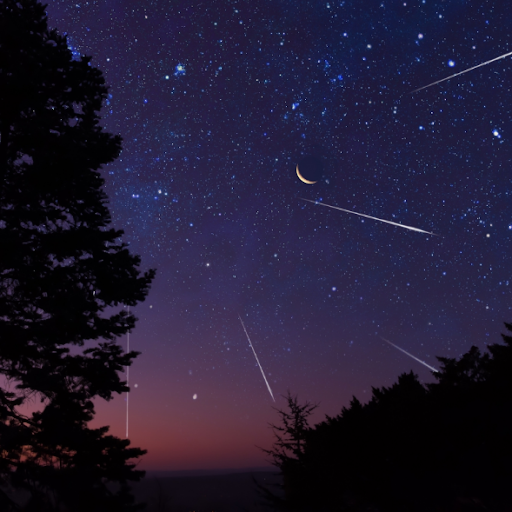As we gaze upon the vast expanse of the night sky, we often find ourselves mesmerized by the cosmic dance of celestial objects. Among the numerous breathtaking phenomena, the Lyrids meteor shower is one of the most captivating sights in our skies. It peaks during late April and is one of the oldest meteor showers known for their fast and bright meteors.
An observation of several meteors appearing to radiate from one spot in the night sky is known as a meteor shower. These meteors are created by streams of space debris known as meteoroids that reach Earth’s atmosphere on parallel trajectories and travel at very high speeds. Almost all meteors disintegrate and never reach Earth’s surface since they are typically smaller than grains of sand. Meteor outbursts and meteor storms are extremely violent or uncommon meteor showers that release at least 1,000 meteors per hour.

At Space India, through Space Explorers Workshop, Cosmic Fireworks, Students will solve the riddle of shooting stars and discover why they get their name. Students will be motivated to conduct and organize their own meteor shower observation by the intriguing ideas presented, such as the distinctions between meteors, meteoroids, and meteorites, the reasons behind meteors’ attraction to Earth, and much more!
In the tapestry of cosmic wonders that adorn our night sky, the Lyrids meteor shower gleams as a celestial jewel. As we marvel at the luminous trail streaking across the heavens, let us reflect on the beauty and grandeur of the universe.

The Lyrids have been observed for 2700 years. These meteor showers occur when Earth passes through the trail of debris left by comet C/1861 G1 Thatcher. Comet Thatcher was discovered on April 5, 1861, by A. E. Thatcher. Meteoroids, which are small particles of dust and debris shed by the comet as it travels through space, collide with Earth’s atmosphere at high speed, creating streaks of light that we observe as meteors or “shooting stars”. Meteor showers are also named after the constellation they appear to originate from. The Lyrids appear to originate from the constellation ‘Lyra’.
In addition to their breathtaking visual appeal, the Lyrids meteor shower holds significant scientific and cultural importance. From a scientific point of view, studying meteor showers like the Lyrids provides valuable insights into the composition and behaviour of the cometary debris. Moreover, meteor showers remind us of our place in the larger universe. They inspire a sense of wonder and curiosity about the universe, making us pause to consider our role.

To spot the shower yourself, head outside to a dark site away from light pollution. The peak of the Lyrids typically occurs around the 22nd or 23rd of April this year, when Earth passes through the densest part of the debris trail. The meteors will appear to originate from a point in the constellation Lyra which is known as radiant. Find Lyra by looking for its brightest star Vega- one of the three stars of the Summer Triangle asterism. However, since the meteors will travel away from the radiant, try to keep an eye on the whole sky. Wait for your eyes to adapt to the darkness and if fortune favours you, you might witness approximately 10 to 20 meteors per hour!
—
If you like the blog, enrol your school or yourself (k-12 student) in our School Programs or Online Programs, call us at +91-74020 74020 or write to us for any query: getintouch@space-india.com

